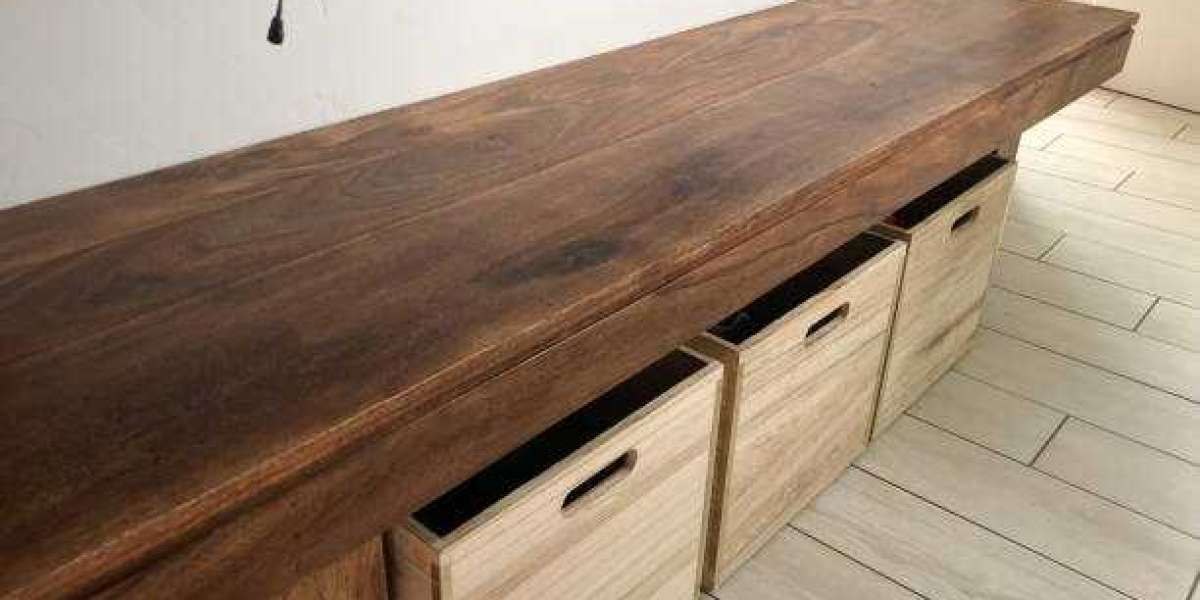A storage bench is more than just a place to sit—it’s a multifunctional piece of furniture that combines seating and organization in one. Whether used to hide away gardening tools or to organize shoes in the hallway, storage benches are practical and stylish additions to many spaces. But when it comes to choosing the right bench, understanding the difference between outdoor and indoor storage benches is critical.
While they may look similar at first glance, outdoor and indoor benches differ in their materials, durability, design, and functionality. Buying the wrong type can lead to poor performance, weather damage, or a mismatch with your décor. This guide breaks down the key differences between the two, helping you make the right decision based on your space and needs.
1. Materials and Construction
Outdoor Storage Benches
Outdoor storage benches are built to withstand changing weather conditions, including rain, sun, snow, and temperature fluctuations. As a result, they’re made with weather-resistant materials such as:
Resin or Plastic: Lightweight, UV-resistant, waterproof, and rust-proof.
Treated Wood: Teak, cedar, or eucalyptus are popular because they resist rot and insects.
Metal: Powder-coated aluminum or steel is often used, but requires rust-proof coatings.
Outdoor benches often feature drainage holes, ventilation gaps, and reinforced lids to prevent water accumulation and mold.
Indoor Storage Benches
Indoor benches are made with a broader variety of materials since they don’t need to withstand the elements:
MDF or Engineered Wood: Common for affordable designs in bedrooms or entryways.
Solid Wood: Offers durability and a more upscale, natural aesthetic.
Upholstery: Padded seats made with fabric, faux leather, or velvet for comfort and style.
Metal Accents: Used for legs or decorative trim, especially in industrial or modern styles.
Because they stay dry and temperature-controlled, indoor benches focus more on style and comfort than weather resistance.
2. Durability and Weather Resistance
Outdoor Benches
Durability is a top priority for outdoor benches. They're designed to resist:
UV rays that cause fading and cracking.
Moisture from rain, snow, and dew that can lead to mold or warping.
Temperature extremes that can affect structural integrity.
Some outdoor benches come with waterproof liners or sealable lids to keep contents dry, making them perfect for storing cushions, gardening tools, pool accessories, or grill supplies.
Indoor Benches
While indoor benches don’t need to stand up to harsh elements, they still need to handle everyday wear and tear. Durability here means:
Resisting scuffs from shoes and bags.
Holding up to frequent sitting or use.
Supporting organized storage without sagging or breaking.
The need for climate-resistance is low, so indoor benches may use more delicate materials like soft fabrics, untreated wood, or painted finishes.
3. Design and Aesthetic Options
Indoor Benches
Indoor benches offer greater design flexibility because they serve as a focal point in living areas. You’ll find:
A wide range of colors, patterns, and fabric types.
Decorative touches like button-tufting, nailhead trim, and carved legs.
Bench tops with cushions for added comfort.
Coordinated design with other furniture pieces (like bedroom sets or hallway decor).
They often blend form and function, matching the home’s style—whether modern, traditional, farmhouse, or bohemian.
Outdoor Benches
Outdoor benches typically favor utility over ornate design, though many still look stylish. You’ll see:
Simple, neutral color palettes like black, gray, brown, or white.
Clean lines with minimal embellishments.
Surfaces that are textured or patterned to hide wear and dirt.
Designs that mimic wood grain or wicker for aesthetic appeal.
Though less decorative, many outdoor benches now blend well with patio furniture and outdoor decor trends.
4. Functionality and Use Cases
Outdoor Storage Benches
Outdoor benches are multi-functional for exterior spaces such as:
Patios and decks: Store outdoor cushions, lanterns, and games.
Gardens: Tuck away hand tools, watering cans, or fertilizer.
Poolside: Hold towels, sunscreen, or pool toys.
Porches: Offer a resting spot and house rain boots or dog leashes.
Many models include lockable lids or waterproof seals, adding security and protection against weather.
Indoor Storage Benches
Indoor storage benches are used in virtually every room of the home:
Entryways: Organize shoes, umbrellas, and bags.
Bedrooms: Store linens, extra pillows, or out-of-season clothing.
Living Rooms: House board games, throws, or magazines.
Kids' Rooms: Keep toys and books tidy.
Closets: Offer seating and accessory storage.
Because they’re inside, indoor benches often prioritize organization, comfort, and style over rugged durability.
5. Mobility and Weight
Outdoor benches, particularly those made of resin or plastic, are generally more lightweight and easy to move. This can be helpful when rearranging a patio or bringing furniture indoors during the winter.
Indoor benches can be heavier, especially if they include solid wood construction or built-in drawers. Many are intended to remain stationary and fit into a specific part of a room.
6. Maintenance Requirements
Outdoor Benches
Expect to clean and maintain outdoor benches more regularly, especially if exposed to the elements. Maintenance may include:
Wiping down with soap and water.
Applying protective sealants (for wood models).
Covering or storing indoors during extreme weather.
Some materials, like resin, are virtually maintenance-free.
Indoor Benches
Indoor benches require less upkeep but still benefit from occasional care:
Vacuuming or cleaning upholstery.
Dusting wood or metal surfaces.
Tightening screws or hinges if needed.
Because they're in a controlled environment, they’re less prone to serious damage or wear.
7. Price Considerations
While both indoor and outdoor benches are available at a range of price points, their value often reflects:
Durability (outdoor)
Comfort and design (indoor)
Storage capacity
Material quality
Generally, outdoor benches with weatherproofing and UV resistance may cost slightly more for long-lasting protection. Indoor benches with high-end finishes or upholstery can also carry premium prices based on aesthetic appeal.
Final Thoughts: Which One Is Right for You?
When deciding between an outdoor or indoor storage bench, it all comes down to purpose and placement.
Choose an outdoor bench if you need:
A weather-resistant solution for patios, decks, or porches
A place to store gardening tools, cushions, or pool gear
Durable construction that stands up to sun and rain
Choose an indoor bench if you want:
A stylish and comfortable seating option
Storage for everyday items like shoes, blankets, or toys
A furniture piece that blends into your home’s design
Both types serve a valuable role in keeping your home organized and stylish—you just need to choose the right one for your environment.












